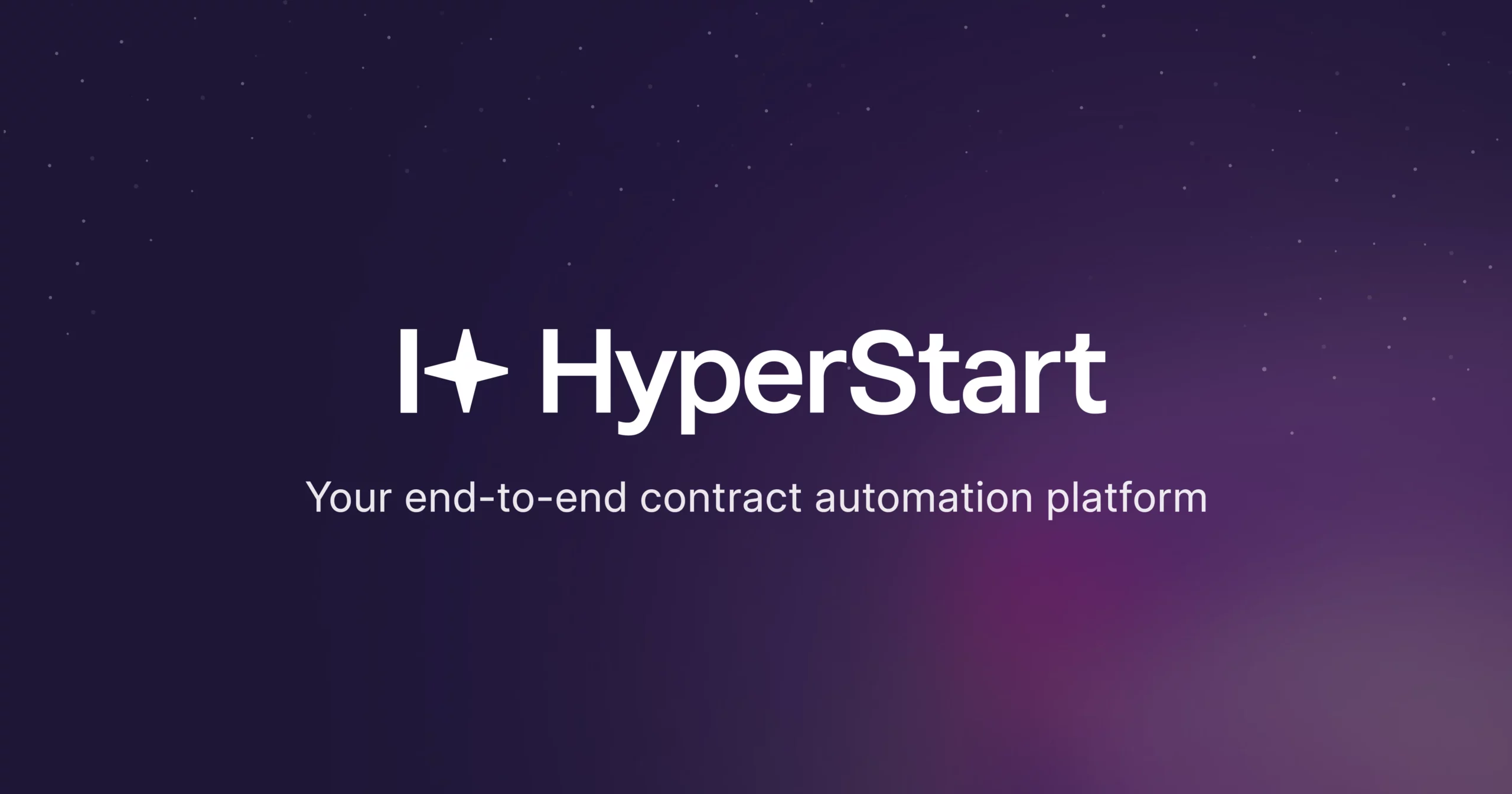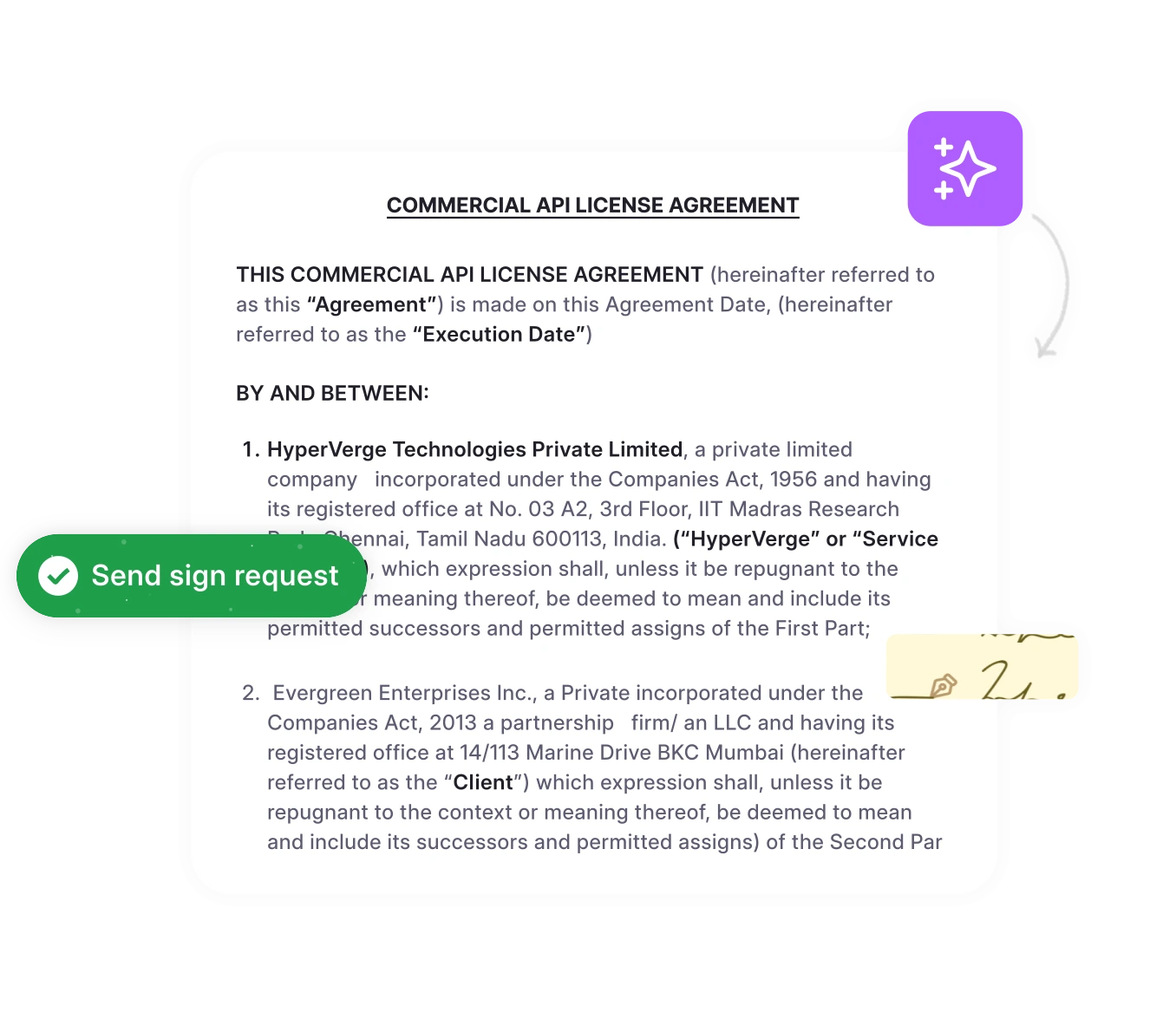Your document management system was not designed to manage contracts. Drafts are buried in email threads. Approvals are split across Slack, Teams, and hallway conversations. Renewal deadlines lurking in spreadsheets you forgot existed. It’s risky and expensive.
McKinsey estimates that poor contract management can quietly drain up to 9% of a company’s annual revenue.
The need to build a strong business case for contract management systems has never been more urgent. Without one, leadership often underestimates the value of slipping through the cracks and how much can be recovered with the right solution.
Organizations which don’t manage their contracts effectively will be at a tremendous competitive disadvantage.
So, how do you convince leadership to invest in a proper contract management solution? This guide will walk you through a battle-tested strategy to build a business case that wins over legal, finance, IT, procurement, and even your most budget-wary executives.
Why do businesses struggle without a contract management system?
Your team thinks they’re saving money by sticking with spreadsheets and shared drives. They’re not. They’re spreading the costs around so thin that nobody notices the real damage accumulating.
Consider this scenario: Someone in your legal department is currently reviewing multiple versions of the same contract, trying to determine which contains the latest edits. That person makes $75,000 a year, and they just spent 30 minutes on a problem that shouldn’t exist. Multiply that across your team, across the year, and suddenly that “free” spreadsheet system costs more than a proper solution.
What are the familiar problems every team faces?
If you’ve worked with contracts for more than a week, you’ve probably experienced at least three of these scenarios. Daily frustrations in contract management:
- Confusion over the latest contract terms: When multiple people edit different versions of the same agreement, it becomes unclear which version contains the most current terms. Teams waste hours reconciling changes and risk executing outdated agreements.
- Wasted time searching for contract data and generating reports manually slows down strategic decision-making: Without a contract repository, contract information is often scattered across inboxes, shared drives, and personal folders. Locating the right document or even confirming its existence can become a time-consuming and frustrating task.
- Missed renewal dates and unintended contract extensions: Lacking automated alerts or a reliable renewal tracking system, teams often miss critical contract expiration dates.
- Delays from annual approval workflows: Contracts frequently get stuck waiting in overloaded inboxes or unclear approval chains. These approval bottlenecks slow down deal cycles, frustrate internal teams, and ultimately impact cash flow and operational efficiency.
- Sensitive contracts at risk due to poor security: When contracts are shared over unsecured email or stored in cloud contract management systems, your legal team faces serious risk exposure. A lack of role-based access, encryption, and audit trails leaves your organization vulnerable to breaches and compliance failures.
Dreading your next compliance audit?
HyperStart’s AI extracts every key clause, term, and obligation so you’re always audit-ready.
Book a Demo4-Step business case for contract management system approval
Now that we’ve established the problem’s scope, let’s build your solution strategy. This framework has helped organizations from startups to Fortune 500 companies secure CLM investments by speaking directly to what leadership cares about most.
Step 1: Align CLM with company goals
Every company talks about digital transformation, but most are still shuffling papers and hunting through email chains for contract information. Your contract lifecycle management system is the missing piece that makes data migration tangible and measurable.
- Show how CLM accelerates deal velocity. When your sales team can access contract templates instantly and track approval status in real-time, contract turnaround time shortens and close rates improve.
- Calculate the labor costs currently spent on manual contract processes. A legal team member making $75,000 annually who spends 20% of their time on administrative contract tasks represents $15,000 in optimization opportunity, and that’s just one person.
- Position CLM as your compliance insurance policy. Automated alerts prevent missed renewals, standardized templates reduce legal risk, and audit trails provide the documentation needed for regulatory compliance.
- When contract data flows seamlessly into your CRM, ERP, and reporting systems, you’ve eliminated a major data silo. This integration enables the real-time insights that make digital transformation valuable.
Step 2: Address department-specific needs
The trick to getting buy-in across your organization? Stop talking about contract management as a one-size-fits-all solution. Different departments have distinct pain points, and your business case must address each team’s specific needs.
Legal department:
Your legal contract management team needs contract management excellence, not technology complexity. They also need better negotiation tools to streamline deal finalization and mitigate risk early in the process. Show them a world where contract templates are standardized, approval workflows move automatically, and they can find contracts without conducting department-wide search parties.
Sales department:
Sales teams live where time kills deals. Show them how CLM software reduces contract turnaround time from weeks to days, how pre-approved contract templates let them close deals without legal review delays, and how customer relationship management integration keeps deals moving smoothly.
Finance department:
Finance needs accurate data fast. Modern contract management solutions integrate with contract reporting systems, automatically pull contract data for reporting, and ensure payment terms are tracked and enforced. When finance can access contract information without playing twenty questions with other departments, they can focus on strategic financial management.
IT department:
Position CLM as a solution that makes ITs life easier. Modern contract management solutions integrate with existing systems rather than replacing them, reduce the number of tools people use, and provide centralized contract data management that improves security and compliance.
Read: 12 Contract Management Best Practices to Follow in 2025
Step 3: Quantify the investment and returns
Your business case needs hard numbers. Calculate current costs of manual processes: time spent by different team members on contract-related tasks, missed opportunities from slow approvals, and penalties from compliance failures.
Then project the benefits: reduced processing time, eliminated manual tasks, faster deal closure, and better compliance. Industry data shows that organizations see:
- 40–60% improvement in contract turnaround time
- 25% reduction in compliance-related issues
- ROI within 12–18 months of implementation
Step 4: Handle common objections
You’ll face objections. Here’s how to turn them into opportunities:
“This costs too much.”
Response: Show them what they’re already spending on their broken system. CLM typically pays for itself within a year, then delivers ongoing returns. It’s not an expense. It’s an investment with a proven track record.
“Implementation will be a nightmare.”
Response: Modern CLM systems aren’t the clunky monsters of the past. Many offer pilot programs where you can prove value with a small team first. Plus, automated migration tools mean your existing contracts transfer seamlessly.
“We don’t need another one, too.
Response: CLM reduces tool complexity by integrating with your existing systems. It’s not about adding another app. It’s about making all your current tools work better together.
“Training will take forever.”
Response: Modern interfaces are designed for legal and non-legal teams who don’t need IT know-how. Resources and self-serve systems that organically connect with your tech stack simplifies adoption.
Gain Full Version Control
HyperStart keeps every contract version synced, tracked, and locked — no more scattered attachments or accidental edits.
Book a DemoMake your business case a reality with HyperStart
Building your case involves evaluating the contract management landscape around parameters like setup time and cost, features, support, pricing, and more. HyperStart CLM stands out as the ideal choice for organizations serious about contract management excellence.
Proven results that matter:
The purpose of a contract does not end at the signature. Ongoing relevance is essential for the contract’s success.
HyperStart delivers measurable outcomes that validate your business case. Organizations using HyperStart achieve an 80% reduction in contract administration time, 5x faster contract review and signing. LeadSquared achieved a 92% acceleration in contract reporting from our AI-powered metadata extraction post-execution.
Lightning-fast implementation:
While most CLM tools take 3-6 months to implement, HyperStart gets you fully operational in 4-6 weeks. The smart one-click import feature migrates all your legacy contracts instantly, with AI automatically extracting and tagging metadata—no manual data entry required.
Enterprise-grade security:
HyperStart maintains SOC 2 Type II and ISO 27001:2013 certifications, ensuring your contract data meets the highest security standards. This addresses IT concerns and compliance requirements from day one.
Seamless integration:
HyperStart connects with 100+ popular platforms, including Salesforce, Gmail, DocuSign, Google Drive, and enterprise resource planning systems. It enhances your existing tech stack rather than disrupting it.
Department-specific solutions:
HyperStart’s AI-powered features serve every team. Legal teams get 1-minute AI contract redlining and automated workflows. Sales teams enjoy CRM integration and 10x faster contract closure. Finance teams benefit from automated reporting and ERP connectivity. HR teams streamline employee contracts with batch processing and compliant templates.
ROI you can bank on:
HyperStart’s customizable pricing delivers 75% faster ROI compared to traditional CLM solutions. The combination of rapid implementation, immediate efficiency gains, and proven results means you’ll see value within weeks, not months.
Your organization deserves contract management software that delivers on its promises. HyperStart’s track record of success, rapid deployment, and comprehensive features make it the clear choice for companies ready to eliminate contract chaos and unlock operational efficiency. With the right approach, the right business case, and the right solution, contract management excellence is within reach.









![13 Best Contract Management Software in 2025 [A Guide]](https://www.hyperstart.com/wp-content/uploads/2024/05/1-1-1_3_600x339.webp)

